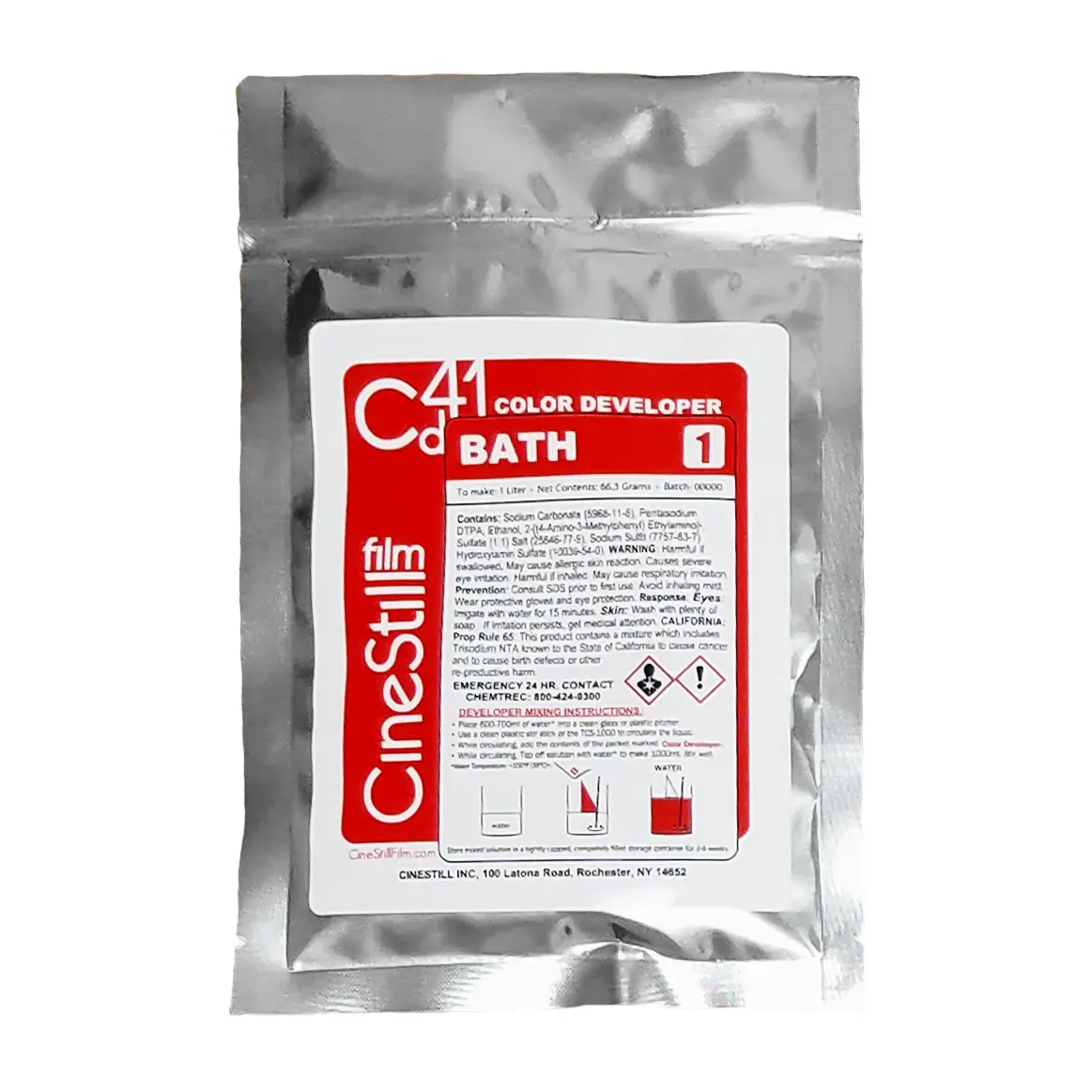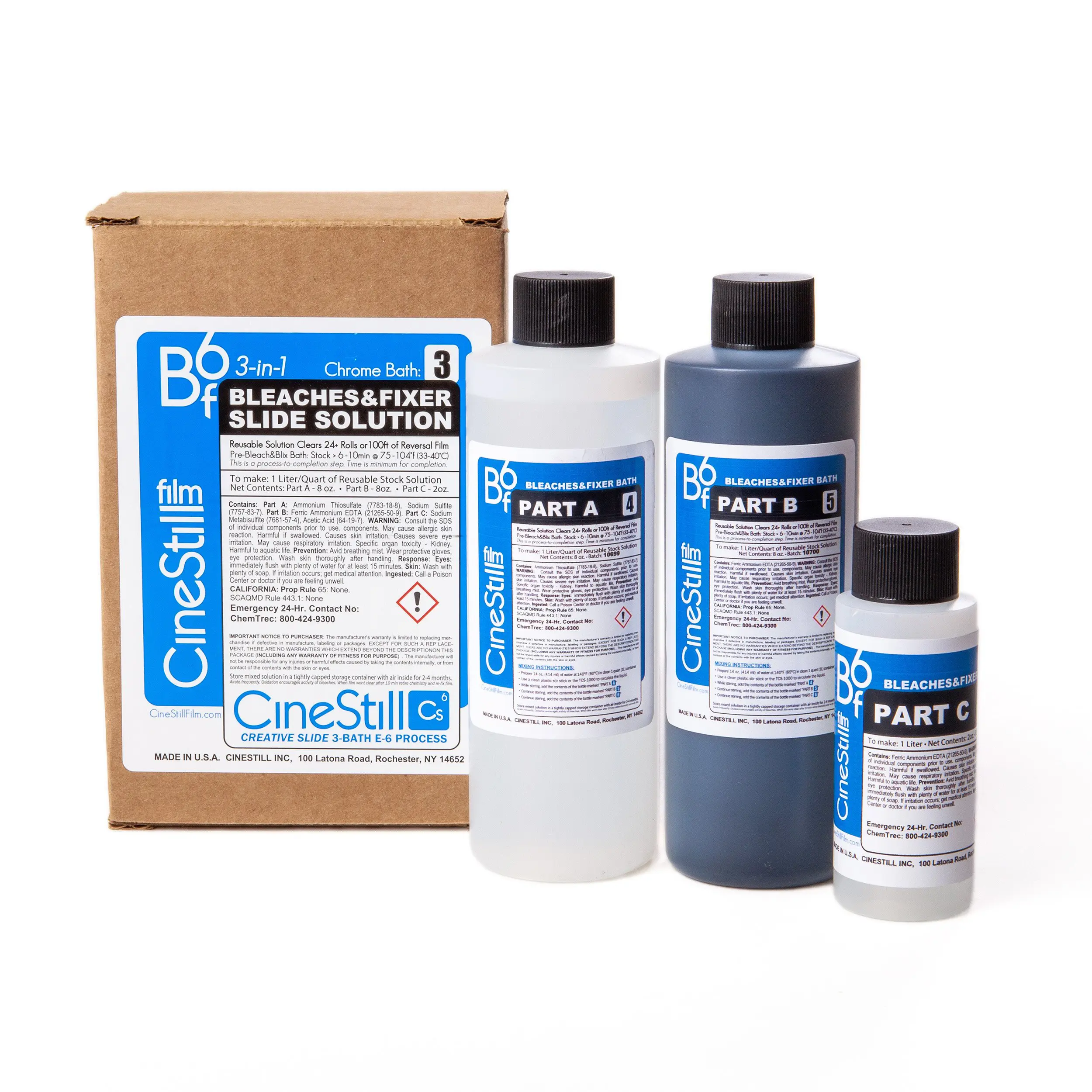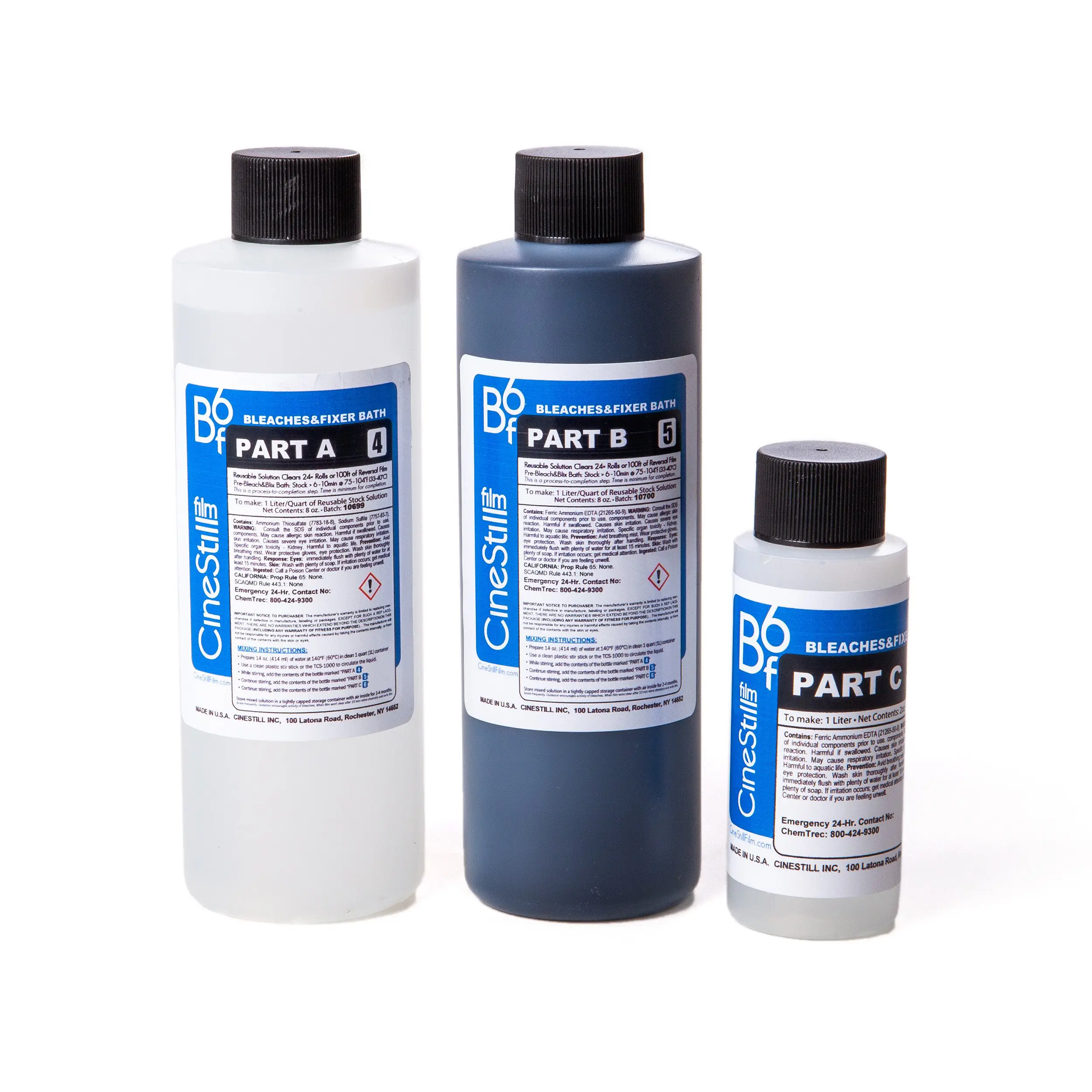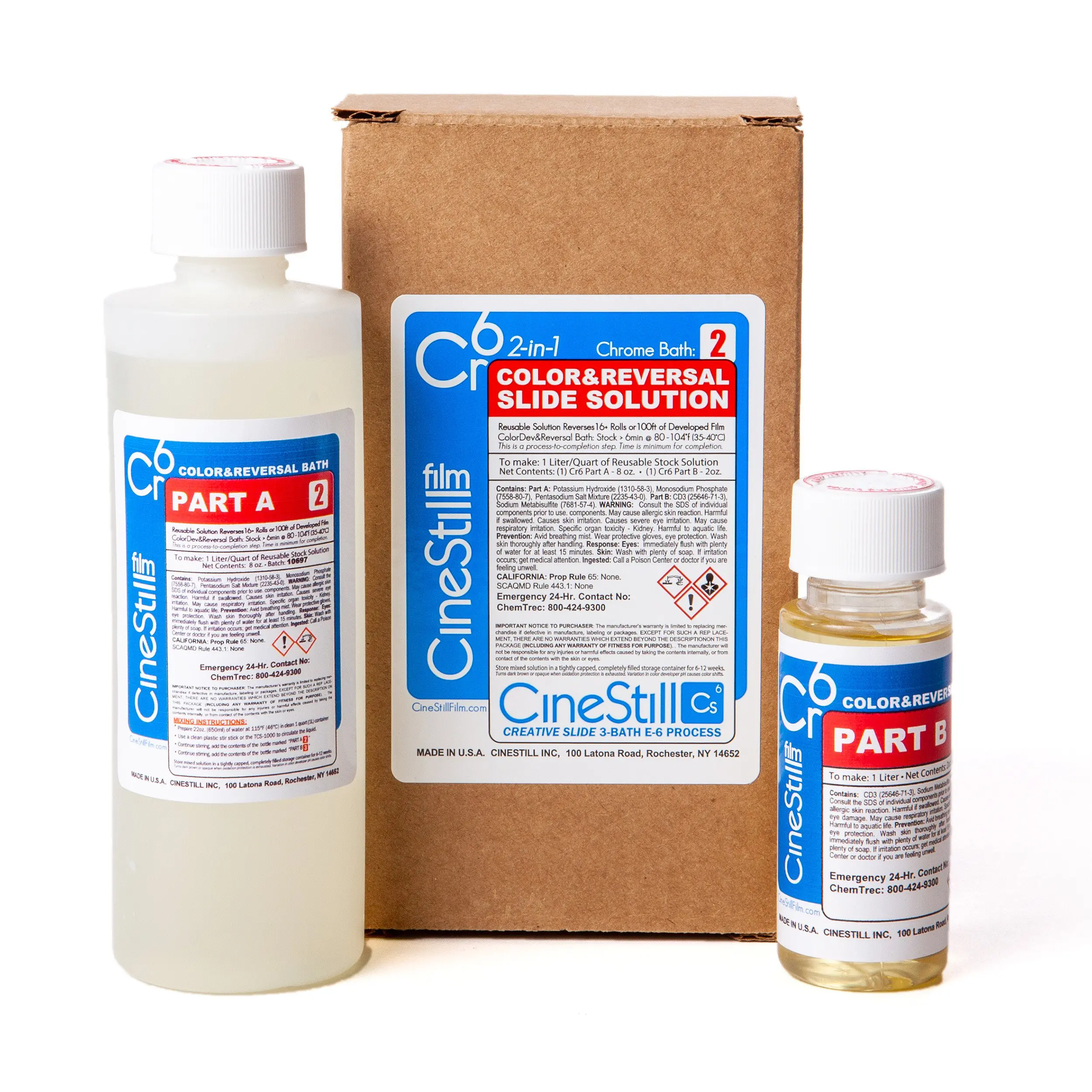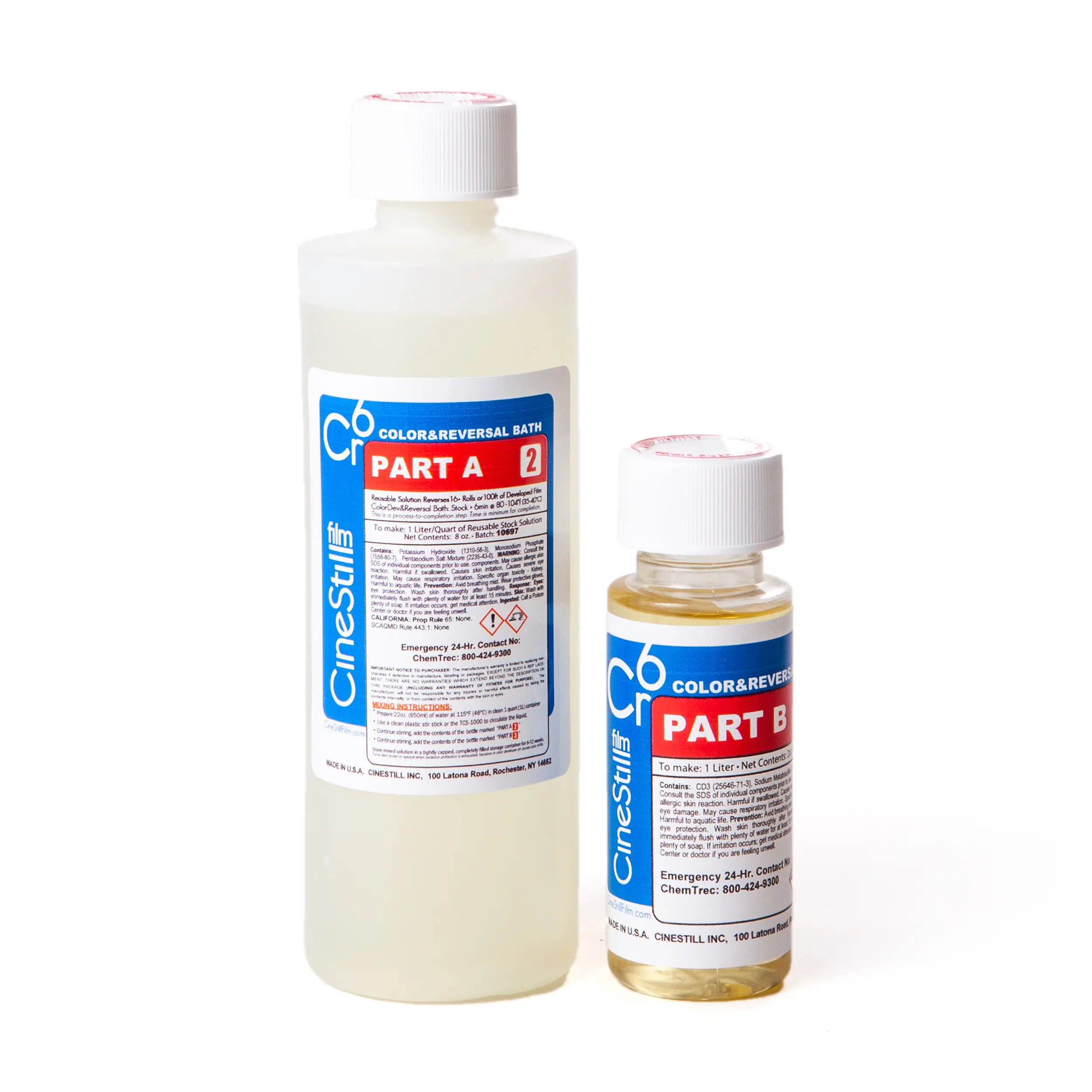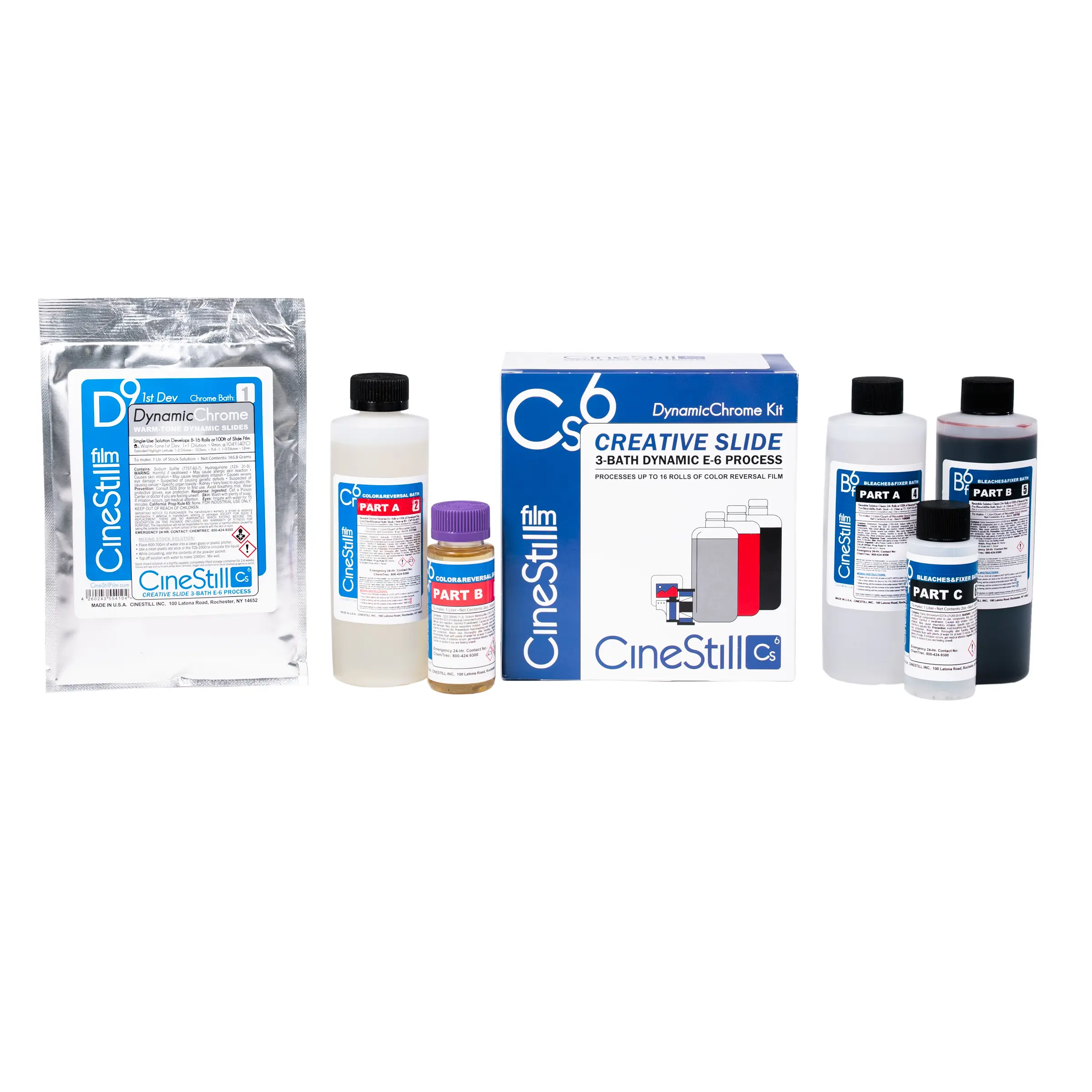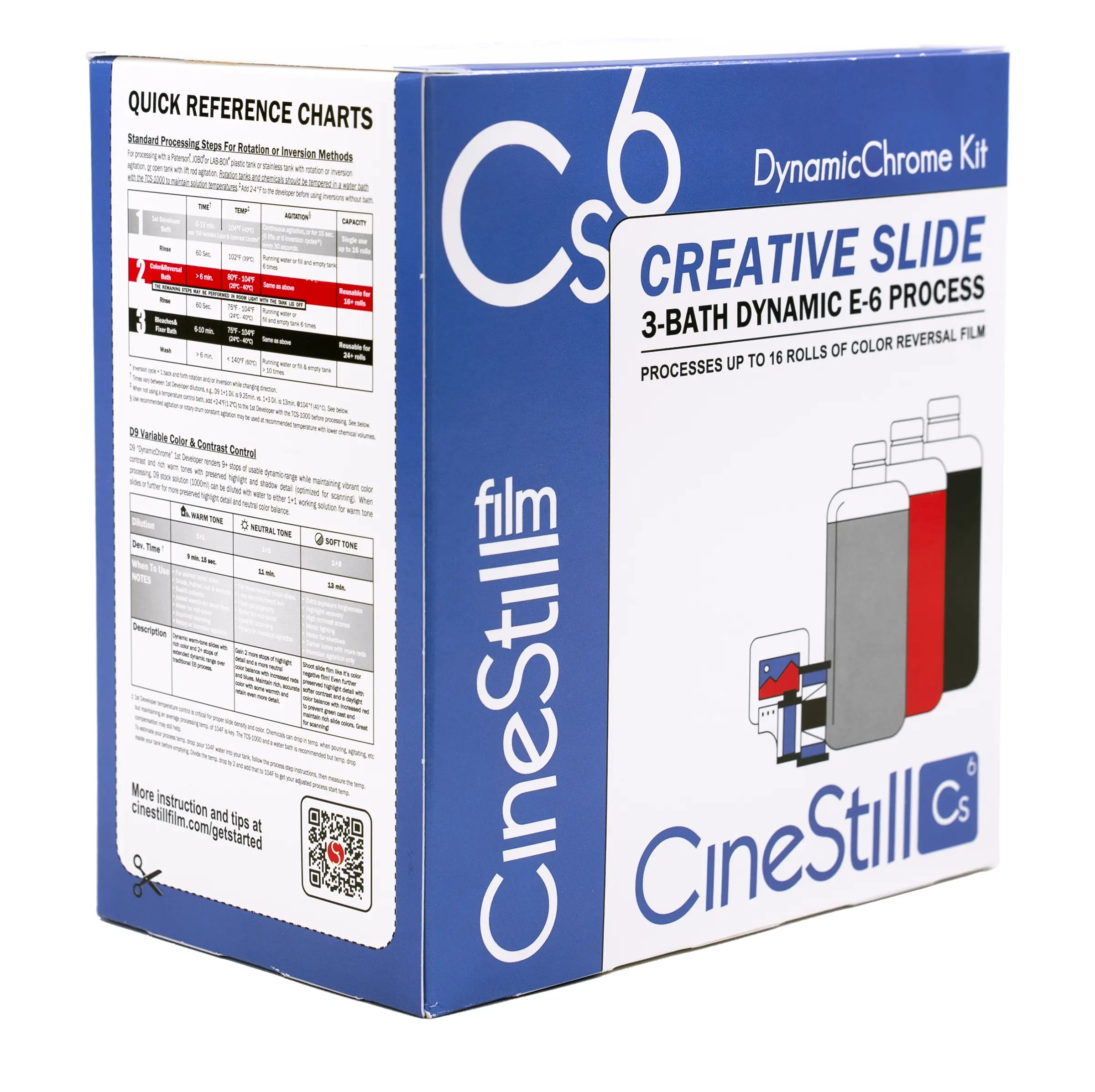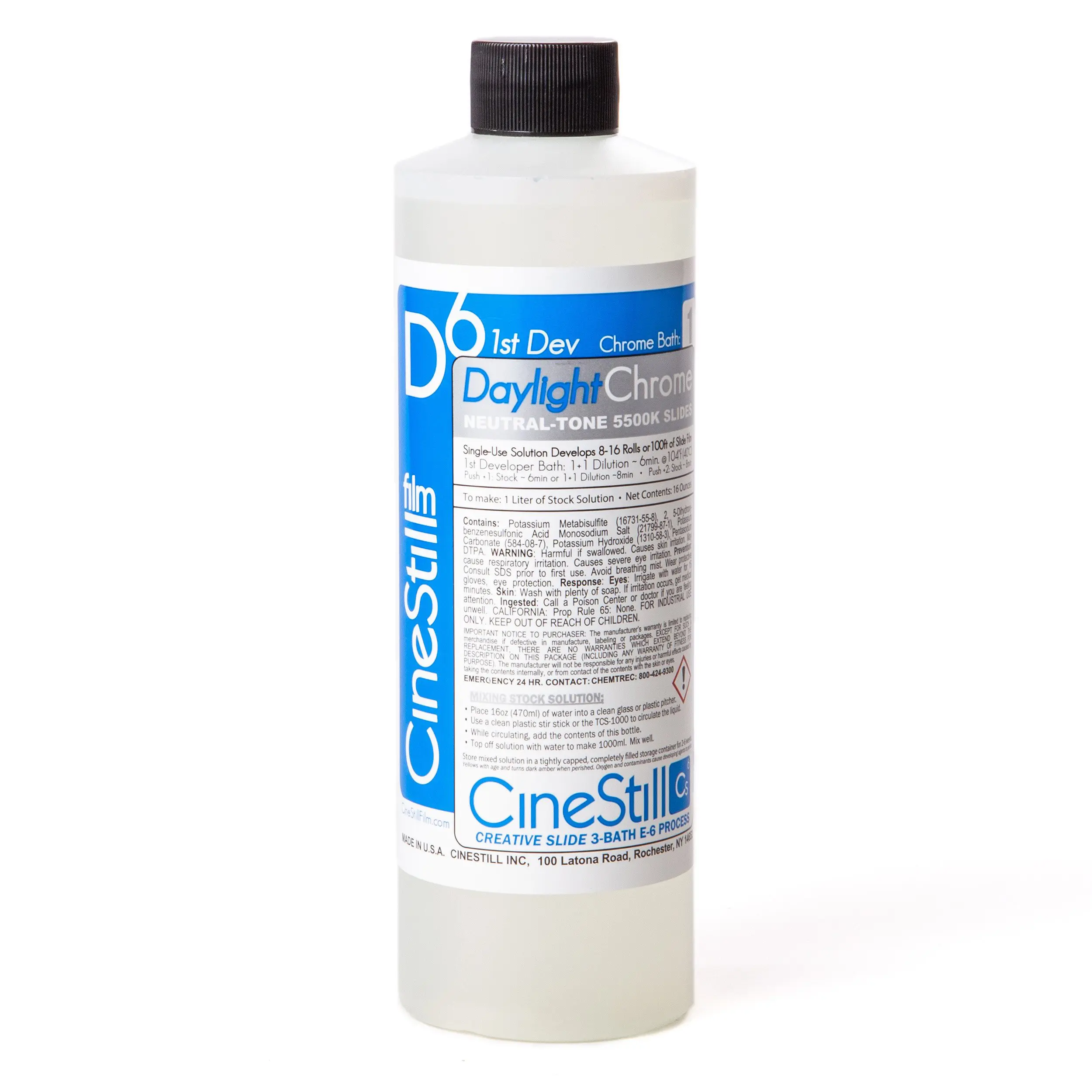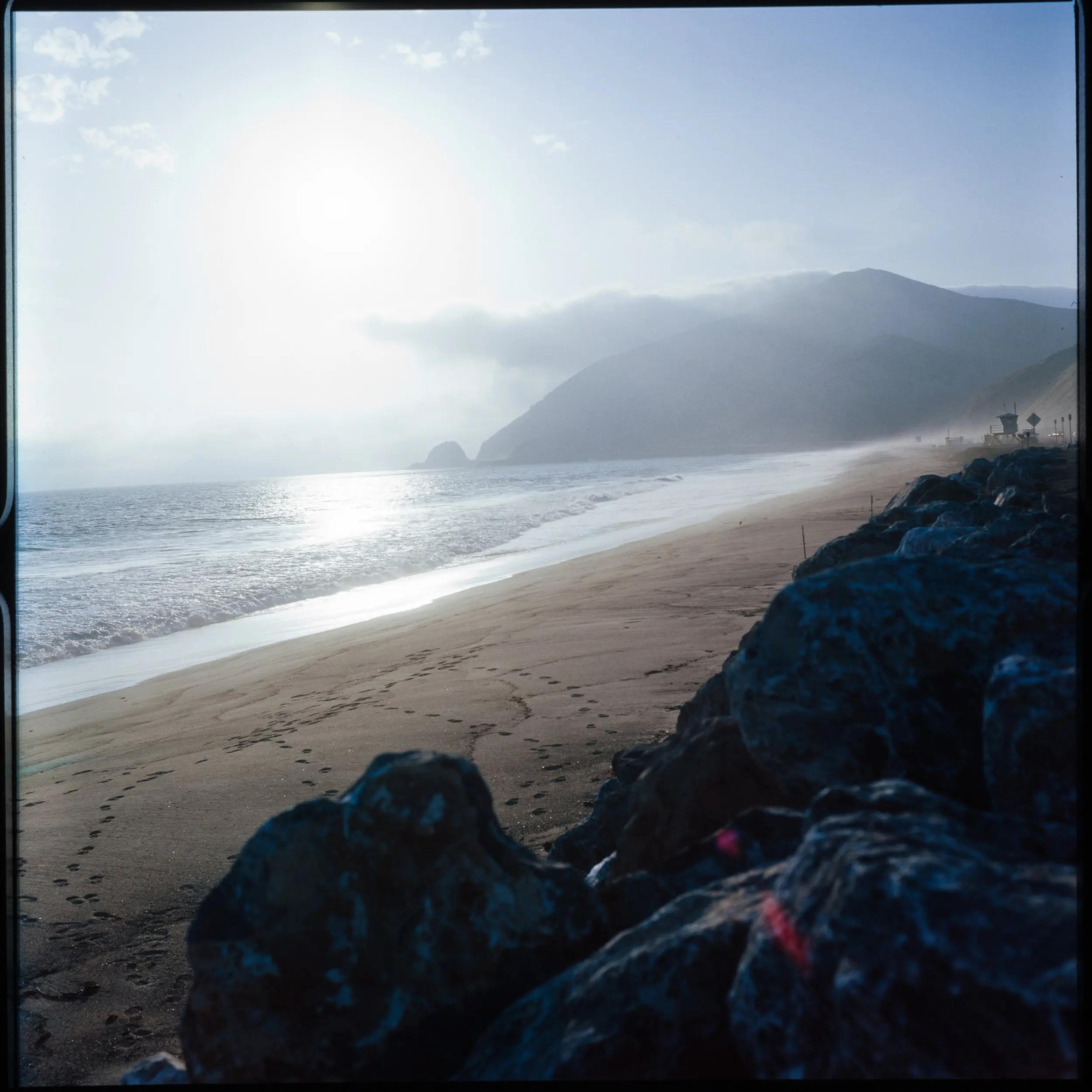CineStill Film CD41 “Color Developer” Bath C-41 Powder (24 Rolls)
$12.99
• For processing any color negative (C-41) film
• Powder ships without Limited Quantity Hazardous (ORM-D) regulations
• Easy to mix concentrate make 1 liter/quart of Color Developer
• 2 bath process (just like most black and white processing)
• No special processor needed (use standard processing tanks and reels)
• Flexible processing temperatures
• Instructions for processing and Push/Pull processing included
• Reusable for up to 24 rolls of film
• Long lasting shelf life
• Fully archival
• Affordable!
Available on backorder
Process or Bleach-Bypass ANY color negative film with 2 simple chemistry mixtures. Reusable solution develops 24+ rolls color film and can be reused alongside the Bf41 Blix bath following the Cs41 instructions, or F96 Rapid Fixer for Bleach-Bypass color process. Bleach-bypassed color film requires Rapid Fixer (ammonium thio) to fully clear the color dyes.
The “Bleach-bypass” color process, also known as skip bleach or silver retention, is a process of skipping the step of bleaching during processing of color films. By doing this, silver is retained in the emulsion along with color dyes. The result is a black and white image over a color image. The images usually have reduced saturation along with increased contrast and graininess. And if you ever want to remove the effect you can simply process it in the Bf41 bath included in our Cs41 2-Bath Kits.
Motion Picture “Bleach-bypass” was first used in cinematography by Japanese filmmaker Hiroshi Inagaki in film Rickshaw Man (1957). Kazuo Miyagawa, as Daiei Film’s cameraman, invented bleach bypass for Inagaki’s film, inspired by the color rendition in the original release of Moby-Dick (1956), printed using dye-transfer Technicolor, and was achieved through the use of an additional black and white overlay. Actually, this is a throwback to pre-1944 Technicolor, which incorporated a silver containing “blank receiver”. Despite this early foray into the technique, it remained overlooked for the most part until its use by Roger Deakins for 1984 (1984). The effect has subsequently become a regular development tool in labwork, and has remained in widespread use. Practitioners include cinematographers Rodrigo Prieto, Remi Adefarasin, Darius Khondji, Dariusz Wolski, Walter Carvalho, Oliver Stapleton, Newton Thomas Sigel, Park Gok-ji, Shane Hurlbut, Steven Soderbergh (as “Peter Andrews”), Tom Stern, Vittorio Storaro, and Janusz Kamiński (notably on Steven Spielberg’s Saving Private Ryan and Minority Report.

